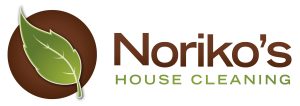Mold growth in homes poses significant risks to both your property and health. Understanding proper mold removal methods is essential to ensure a safe living environment and prevent recurring infestations. Whether tackling small areas or seeking help for widespread issues, professional house cleaners can play a key role in maintaining a mold-free home.
Understanding Mold Growth Patterns
Mold thrives in damp, dark areas where moisture levels are consistently high. Common problem spots include bathrooms, kitchens, basements, and spaces with water leaks or inadequate ventilation. Before starting any removal efforts, it is crucial to identify the source of moisture. This might involve addressing leaky pipes, fixing condensation issues, or managing high humidity levels. Resolving these underlying causes is vital to preventing mold from reappearing after cleanup.
Safety Measures Before Removal
Proper protective equipment is essential for safely removing mold. Use N-95 respirators, long rubber gloves, protective eyewear, and clothing that fully covers your skin. For mold infestations larger than 10 square feet, consider hiring professional remediation services to ensure thorough and safe removal. Smaller mold issues can often be managed independently with the right precautions in place.
Removal Methods and Techniques
The first step in mold removal is addressing moisture problems. Repair any leaks, improve ventilation, and use dehumidifiers to maintain optimal humidity levels. For surface mold, clean the affected areas with commercial mold removers or a solution of water and detergent. Hard surfaces, like tile or concrete, require vigorous scrubbing, while porous materials, such as drywall or carpeting, may need to be replaced entirely.
Effective cleaning techniques include:
- Sealing off the affected area with plastic sheeting to prevent spores from spreading.
- Ensuring proper ventilation by opening windows and using fans where necessary.
- Using HEPA-filter vacuum cleaners to clean dust and debris.
- Disposing of mold-contaminated materials in sealed plastic bags to prevent cross-contamination.
Preventing Future Growth
Controlling moisture levels is the key to preventing mold regrowth. Install proper ventilation systems in moisture-prone areas such as bathrooms and kitchens, and maintain indoor humidity levels below 60%. Promptly repairing leaks and addressing water damage can also prevent mold from developing. During home renovations, consider using mold-resistant products, such as drywall or paint, to provide an extra layer of protection.
Post-Removal Maintenance
Once the mold is removed, maintaining a clean and dry environment is essential to prevent its return. Use humidity meters to monitor moisture levels and regularly inspect areas prone to dampness. Quickly address any signs of water issues to avoid potential infestations. Dehumidifiers and moisture-absorbing products can also help keep the indoor environment dry and inhospitable to mold.
Documenting your efforts to manage mold issues can be useful for future reference or when selling your home. Keeping records of past problems and remediation measures demonstrates responsible maintenance practices.
Mold removal requires diligence and careful attention to detail. While smaller areas of mold growth can often be addressed independently, larger infestations should be handled by professionals. Regular maintenance, coupled with effective moisture control, is the best way to protect your home and health from the risks associated with mold. Taking swift action at the first signs of mold can prevent minor issues from escalating into major problems.
Other related articles:

